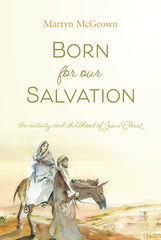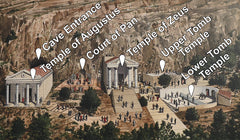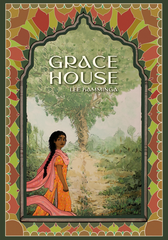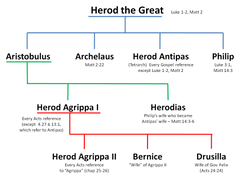Your cart is empty now.

Social Constructionism (6): Shaping a worldview of doubt and uncertainty
In my reading, I’m usually not attracted to articles written in a series. For starters, I want the option of reading everything the author has to say in one sitting. Secondly, unless the author can produce new installments on a timely basis, I don’t have the patience to wait four months before I read the next article. This lamentably leads me to my opening point: I’ve done everything in this series of posts that I dislike as a reader. Mea Culpa.
_________________________________
In the last post, I wrote about the difficulty in defining social constructionism. It doesn’t package well. Frankly, very little in postmodernism packages well. But we can build a framework for understanding. For that, I turned to Vivien Burr’s four key assumptions of that which social constructionism is built upon.[1]
- A critical stance toward taken-for-granted knowledge.
- Historical and cultural specificity (i.e., truth is relative to time and place).
- Knowledge is sustained by social processes.
- Knowledge and social action go together.
I will turn to the first assumption in this post.
________________________________
Social constructionism takes a critical stance toward taken-for-granted knowledge. This phrase “taken-for-granted knowledge” may not sit well with you, but it simply refers to a body of knowledge that many in society hold to be true without deliberate or intentional acceptance. For example, there are two genders in humans: male and female. Most people in this world acknowledge this to be true.[2] Therefore, the knowledge that there are two genders (male and female) would fall into the artificial bracket of “taken-for-granted” knowledge.
Social constructionism challenges this. Intentionally so. It does this by sowing the seeds of doubt over many established social norms which find their roots in creation ordinances. In the process, the idea of truth itself is obliterated.
Social constructionism finds its oxygen in the air of doubt. The lexical definition of doubt is “a feeling of uncertainty.” This is exactly what social constructionism requires to thrive. It not only requires it, but it breeds it as well. Uncertainty as a mode of perceiving the world is the offspring of postmodernism.
You see, uncertainty and doubt have always existed and will always be with us, however, it has been the chief aim of man to establish certainty out of that which was once uncertain. This shouldn’t be a surprise. We do this all the time. If you are uncertain about how to get to your child’s volleyball game, you do everything you can to alleviate that uncertainty. If the mechanic is uncertain about what is wrong with the car, it is his job to find certainty so that he may provide a solution. But social constructionism doesn’t want certainty. It wants to always question. Now, I am not wary of questioning. This is a requirement if we want to seek truth. But social constructionism doesn’t view questioning as a means to truth; questioning is the means and the ends. In social constructionism, the question is primary, and any answer is secondary. Answers are secondary because there will always be another way to question one’s understanding of reality and thus different answers will emerge. The constant questioning unaccompanied by the conviction that there is a truth and reality independent of the knower simply breeds doubt about everything.
Let me try to illustrate this. If a detective comes upon a crime scene in a dark alley where a woman is lying dead on the ground with bruises on her neck, it is indeed his job to do some heavy questioning. Although he may be certain the woman is dead, he is uncertain about how she died. He has a lot of questions. It is incumbent upon him to ask these questions, as many questions as he can think of. He must ask not only complicated questions such as whether or not there any chemical toxins in her blood, but he must also ask very basic questions. Even questions that challenge common assumptions. Did she kill herself? Did she want to die? Is this a trap?
In this illustration we understand questions are good and healthy; even questions that may challenge our closely held assumptions. They are tools used to uncover the truth of the matter. The question isn’t primary, it merely serves as a methodology of increasing certainty.
But social constructionism doesn’t view questions as a tool for increasing certainty. Instead questions are a tool for maintaining uncertainty. The social constructivist questions everything. But this alone isn’t the real failure. The failure comes in the motivation behind the questioning. The questions are designed to be disruptive, to challenge the truth, to overcome creational ordinances.
Let’s hear Vivien Burr in her book “Social Constructionism”:
Social constructionism cautions us to be ever suspicious of our assumptions about how the world appears to be….[An] example is that of gender and sex. Our observations of the world suggest to us that there are two categories of human being, men and women. Social constructionism bids us to seriously question whether the categories of ‘man’ and ‘woman’ are simply a reflection of naturally occurring distinct types of human being. This may seem a bizarre idea at first, and of course differences in reproductive organs are present in many species. But we become more aware of the greyness of such categories when we look at practices such as gender reassignment surgery and the surrounding debate about how to classify people as unambiguously male and female.”
She minimizes the concept of male and female by saying human culture is responsible for establishing all the norms for what it means to be “man” and “woman.” She comes to the following conclusion:
“We can thus begin to consider that these seemingly natural categories may be inevitably bound up with gender, the normative prescriptions of masculinity and femininity in a culture, so that that whole categories of personhood, that is all the things it means to be a man or a woman, have been built upon them. Social constructionism would suggest that we might equally well, and just as absurdly, have divided people up into tall and short, or those with ear lobes and those without.”
We may be quick to find this position irrational. But it isn’t. It is quite rational if one denies the existence of a knowledge of truth that is outside of human construction. If knowledge and truth are purely social constructs, then it follows sound logic to conclude that one’s understanding of gender can change at the will of humanity. After all, it was constructed by social processes in the first place!
Do you see why doubt is integral to this worldview? Nothing is certain, and everything can and should be questioned because everything is based on the constructs of mortal man. There is no transcendent rock of truth that exists outside of human construction.
That is not the worldview of a Reformed man or woman. Herman Bavinck lamented the poison of doubt. He writes, “Doubt has now become the sickness of our century, bringing with it a string of moral problems and plagues.”[3] That was written over one hundred years ago. Today the moral problems and plagues are suffocating the world. They have caused the church to dwindle. No, a Reformed man and woman are people of certainty. Bavinck writes:
In order to live comforted and die happily, we need certainty about the invisible and eternal things above. We must know what we are and where we are going. We must know that our personhood is more than a ripple in the ocean, that our moral battle stands far above the natural order, and that the highest and purest ideals of the soul are not illusions but reality. We must know how we can be liberated from the accusations of our conscience and from the weight of sin. We must know that God is and that He is our God. We must be sure we are reconciled to Him and can therefore approach death and judgment without terror. In all this, our greatest need is for certainty. It is the deepest, although often unconscious, need of the human soul.”
Next time, D.V., I will examine social constructionism’s assumption that knowledge and truth are historically and culturally relative.
________________
[1] Burr, Vivien. Social constructionism. 2. ed. Routledge, 2004.
[2] Although this is changing due to the influence of social constructionism. This will be mentioned later in the post.
[3] Bavinck, Herman. The certainty of faith. Paideia Press, 1980.
________________
This post was written by Rick Mingerink, a member of the Byron Center Protestant Reformed Church in Michigan. Rick is also a principal at a Christian school in West Michigan. If you have a question or comment for Rick, please do so in the comment section.
________________
Previous articles in this series:
The content of the article above is the sole responsibility of the article author. This article does not necessarily reflect the opinions and beliefs of the Reformed Free Publishing staff or Association, and the article author does not speak for the RFPA.

Donate
Your contributions make it possible for us to reach Christians in more markets and more lands around the world than ever before.
Select Frequency
Enter Amount










